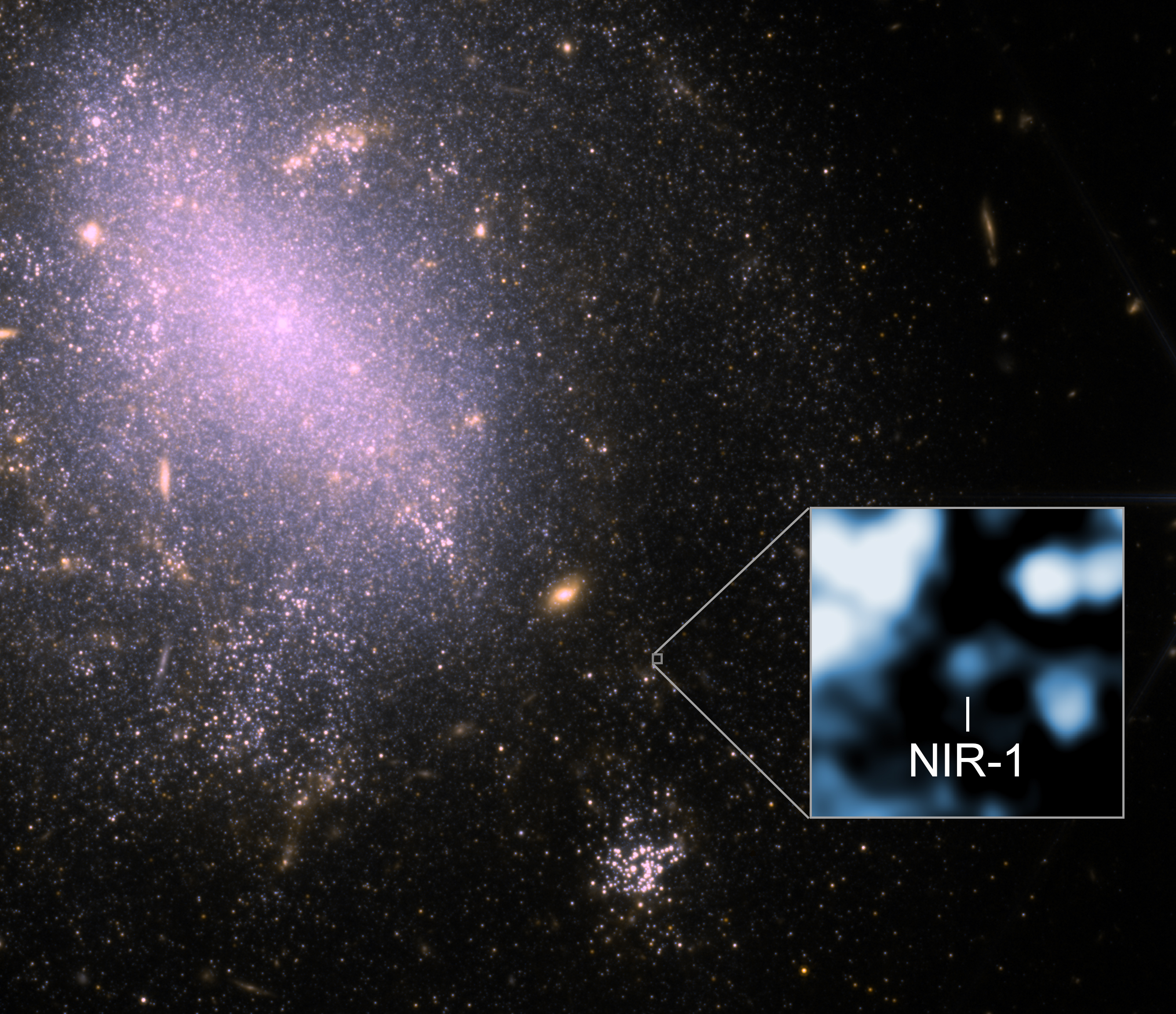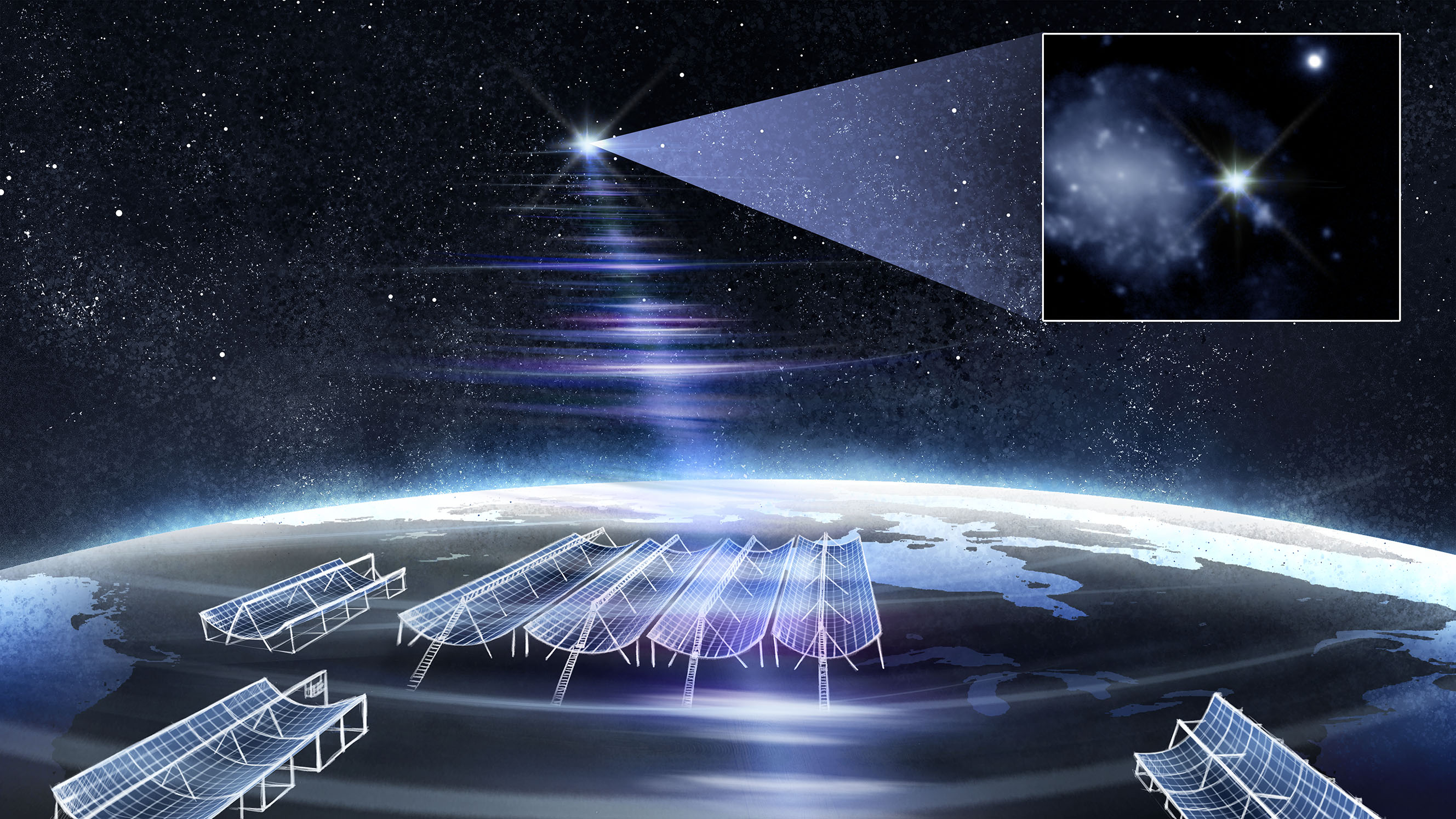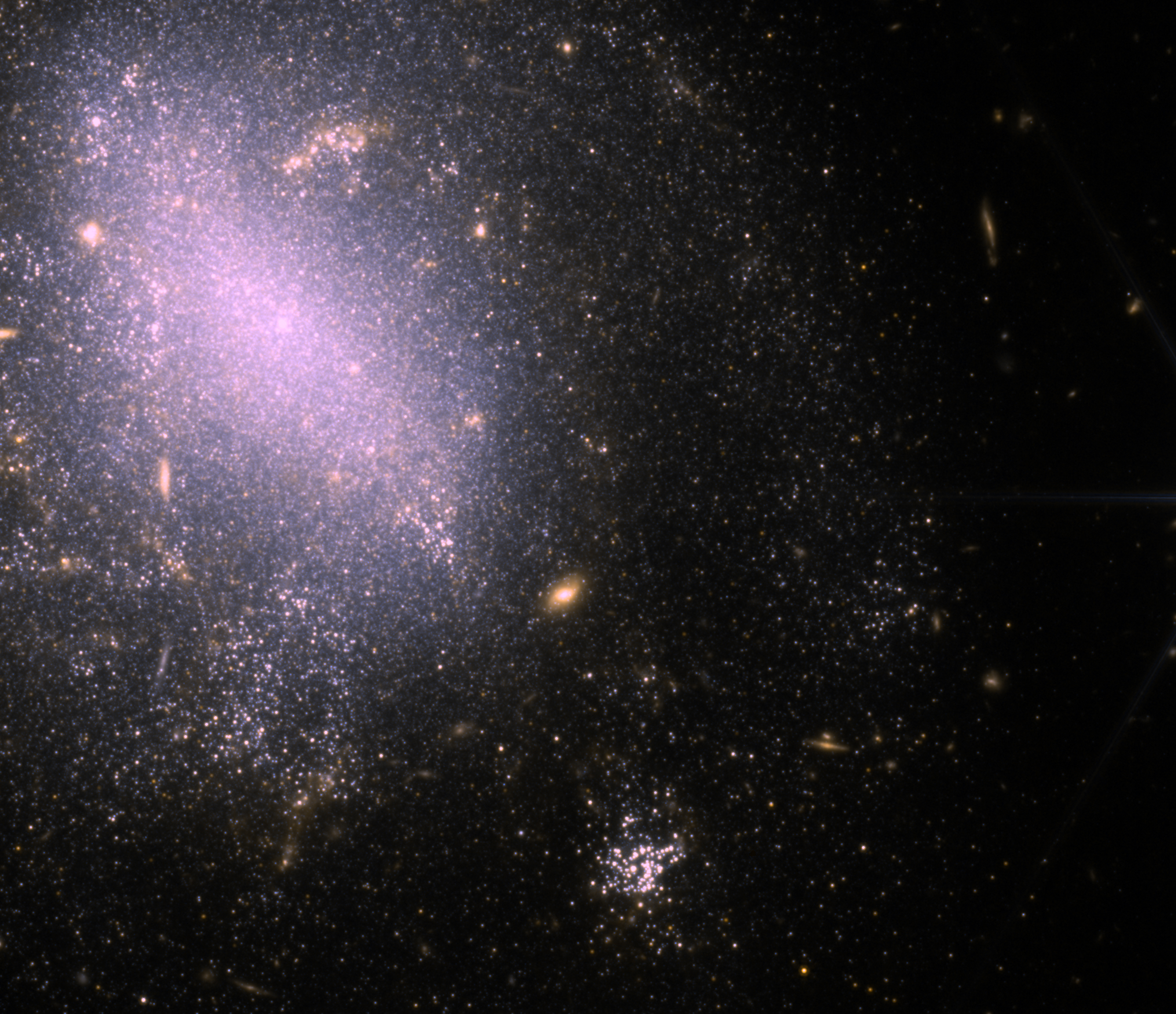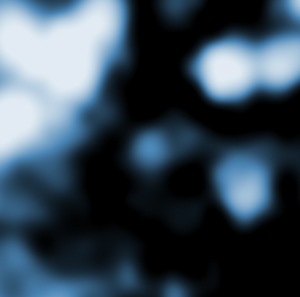Image List
-

A James Webb Space Telescope (JWST) infrared image of the galaxy NGC 4141 containing the fast radio burst FRB 20250316A. This FRB was discovered March 16, 2025 using the CHIME Outrigger array. The inset shows a tiny area of the galaxy containing the FRB’s precise location, revealing the faint infrared source, NIR-1. This may be the binary companion of a neutron star that produced the FRB or fading light from an energetic outburst that produced the FRB. If NIR-1 is unrelated to the FRB, the young massive stars surrounding the FRB location also point to a neutron star origin.
Credit: NASA/ESA/CSA/CfA/P. Blanchard et al.; Image processing: CfA/P. Edmonds -

Artist’s rendition of CHIME/FRB and its Outriggers localizing FRB 20250316A. Inset: The host galaxy (NGC 4141) as imaged by the MMT Observatory (PI: Yuxin (Vic) Dong), illustrating the location of the FRB within a spiral arm of NGC 4141.
Credit: Daniëlle Futselaar/MMT Observatory -

A James Webb Space Telescope (JWST) infrared image of the galaxy NGC 4141 containing the fast radio burst FRB 20250316A. This FRB was discovered March 16, 2025 using the CHIME Outrigger array. Within the image is a faint infrared source located close to the position of the FRB. This may be the binary companion of a neutron star that produced the FRB or fading light from an energetic outburst that produced the FRB. If NIR-1 is unrelated to the FRB, the young massive stars surrounding the FRB location also point to a neutron star origin.
Credit: NASA/ESA/CSA/CfA/P. Blanchard et al.; Image processing: CfA/P. Edmonds -

A James Webb Space Telescope (JWST) infrared image of a tiny region of the galaxy NGC 4141 containing the fast radio burst FRB 20250316A. This FRB was discovered March 16, 2025 using the CHIME Outrigger array. At the center of the image is the faint infrared source, NIR-1, located near the position of the FRB. This may be the binary companion of a neutron star that produced the FRB or fading light from an energetic outburst that produced the FRB. If NIR-1 is unrelated to the FRB, the young massive stars surrounding the FRB location also point to a neutron star origin.
Credit: NASA/ESA/CSA/CfA/P. Blanchard et al.; Image processing: CfA/P. Edmonds